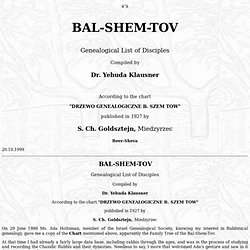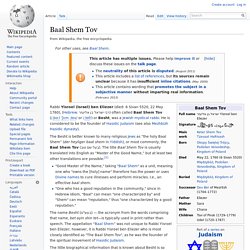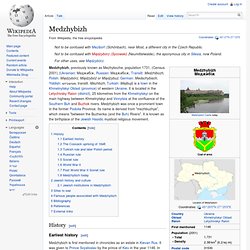

Baal Shem Tov family tree. Etz Hahaim - Introduction by Dr. Yehuda Klausner. Á"ä Genealogical List of Disciples Compiled by Dr.

Yehuda Klausner According to the chart published in 1927 by S. Beer-Sheva According to the chart "DRZEWO GENEALOGICZNE B. On 29 June 1998 Ms. At that time I had already a fairly large data base, including rabbis through the ages, and was in the process of studying and recording the Chasidic Rabbis and their dynasties. The Chart, apparently a handwritten copy of a copy of a copy, not very legible, offered a challenge to anyone interested in and familiar with the subject. The Chart is not a Family Tree of the Bal-Shem-Tov but a roll of his disciples and their disciples thereafter, and contains some of his close family members as well. 1. 2. I added the List of Chasidic Dynasties, not included in the Chart, showing which of the persons in the Chart (marked by the author's numerals) belongs to which Chasidic dynasty.
I made extensive use of the learned work of Y. Yehuda Klausner.
Baal Shem Tov Foundation - BaalShemTov.com. Baal Shem Tov. The Besht is better known to many religious Jews as “the holy Baal Shem” (der heyliger baal shem in Yiddish), or most commonly, the Baal Shem Tov (בעל שם טוב).

The title Baal Shem Tov is usually translated into English as “Master of the Good Name,” but at least two other translations are possible:[1] "Good Master of the Name," taking "Baal Shem" as a unit, meaning one who "owns the [holy] name" therefore has the power or uses Divine names to cure illnesses and perform miracles. I.e., an effective baal shem. "One who has a good reputation in the community," since in Hebrew idiom, "Baal" can mean "one characterized by" and "Shem" can mean "reputation," thus "one characterized by a good reputation. " The name Besht (בעש"ט) — the acronym from the words comprising that name, bet ayin shin tet—is typically used in print rather than speech. Nevertheless, from the numerous legends connected with his birth it appears that his parents were poor, upright, and pious.
Early life and marriage[edit] Medzhybizh - Baal Shem Tow. Coordinates: 49°27′N 27°25′E / 49.450°N 27.417°E / 49.450; 27.417 Medzhybizh, previously known as Mezhybozhe, population 1731, (Census 2001) (Ukrainian: Меджибіж, Russian: Меджибож, Translit: Medzhibozh, Polish: Międzybórz, Międzybóż or Międzybuż, German: Medschybisch, Yiddish: מעזשביזש, translit.

Mezhbizh, Turkish: Mejibuji) is a town in the Khmelnytskyi Oblast (province) of western Ukraine. It is located in the Letychivsky Raion (district), 25 kilometres from the Khmelnytskyi on the main highway between Khmelnytskyi and Vinnytsia at the confluence of the Southern Buh and Buzhok rivers. Medzhybizh was once a prominent town in the former Podolia Province. Its name is derived from "mezhbuzhye", which means "between the Buzhenka (and the Buh) Rivers". History[edit] Earliest history[edit] The Orthodox church under renovation inside Medzhybizh castle. 19th century mill buildings adjacent to the mill dam and the lake on the Southern Bug The Cossack uprising of 1648[edit] Russian rule[edit]